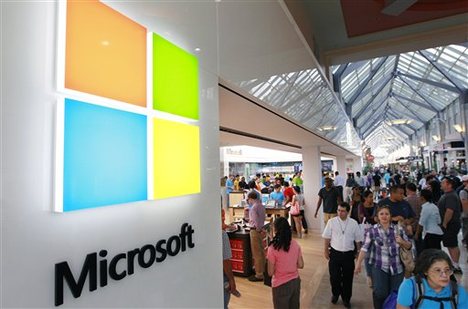With the advent of STEM visa bill failing in the Senate despite the massive shortage of highly skilled personnel needed to fill jobs in Silicon Valley, Microsoft has made a bold proposal: to pay for the right to recruit highly skilled foreign workers.
“It’s a problem that’s approaching dimensions of a genuine crisis,” said Brad Smith, Microsoft executive vice president and general counsel, talking about the short supply of skilled professionals.This proposal is meant to hit the foreign STEM graduates living in the U.S. or the Indian IT companies the most. This could raise a huge $5 billion over a decade, it said.
What does the bill look like?
The bill has two important proposals:
-
Additional H-1Bs with $10,000 Fee:
Microsoft proposes that Congress pass a bill that would allow 20,000 additional H-1B visas each year solely for filling jobs in Science, Technology, Engineering and Mathematics (the so called ‘STEM’ jobs), in addition to the 65,000 allotted per year as of now. He proposes that companies, who wish to avail these visas, should pay $10,000 for each of these STEM visas.
-
Additional Green cards with $15,000 Fee:
Microsoft is also calling on the federal government to release 20,000 green cards from the pool of a half a million or so unused green cards so that highly skilled workers can stay and work in the U.S indefinitely as opposed to the 6-year cap that H-1B visa holder’s face. Microsoft offers that employers who want to avail of these green cards can pay up to $15,000 for each of them.
Altogether, the plan will fetch the federal government $500 million in revenue. This revenue, Smith proposes, can be used to improve education in the U.S, by hiring and training more STEM teachers for schools, from kindergarten right up to the twelfth grade.
Critics of the new proposal say that the $10,000 fee would give Microsoft, the largest user of H-1B visas currently (taking up over 4000 of the 65,000 cap) an edge over Indian recruiters like Infosys and Tata Consultancy Services. However, one does have to consider that high tech worker salaries are in the range of $100,000 – $120,000. Compared to that, the $10,000 fee seems so negligible so as to make the cost insignificant to any of the tech companies looking to hire workers from abroad.
The chances of such a proposal, passing muster in Congress is bleak however. Many different groups have thwarted attempts at such immigration overhaul. Among them are Hispanic interests working alongside Democrats who want to use H-1B visas as pathways to grant illegal immigrants brought to the U.S as children, a path to citizenship. Labor unions are another group who oppose such reforms, arguing that foreigners could displace American workers.
With the Presidential election around the corner, it is unlikely that Congress will take up this proposal up for legislation anytime soon. However, one can only hope that post-election, Congress would consider this proposal as part of a comprehensive immigration reform. Failure to implement such a proposal in the face of the massive highly skilled labor shortages will end up sending high tech American jobs abroad.
What’s your take on this? We would love to hear from you. Please comment or email us to [email protected]

I have lost all my hopes. They have been dragging about this information with some or other bill. Although always giving us some hope. Thanks for such a useful information guys.
You do a great job. Keep going!
Thanks H1BWiki!!! You guys rock. I always wait for your updates on facebook
I agree. Microsoft is trying to help graduates in India and also master’s students in the U.S. Good going MS and thanks for the post.
Wow this is a useful piece of information. Thanks H1BWiki for giving us such valuable news updates. I hope at least this bill makes some good progress.
This looks promising!
There are so many rules and regulations coming these days on h1b and green cards but none of them are getting approved. This wont go anywhere too
Microsoft thinks that they can change the immigration policies…lol